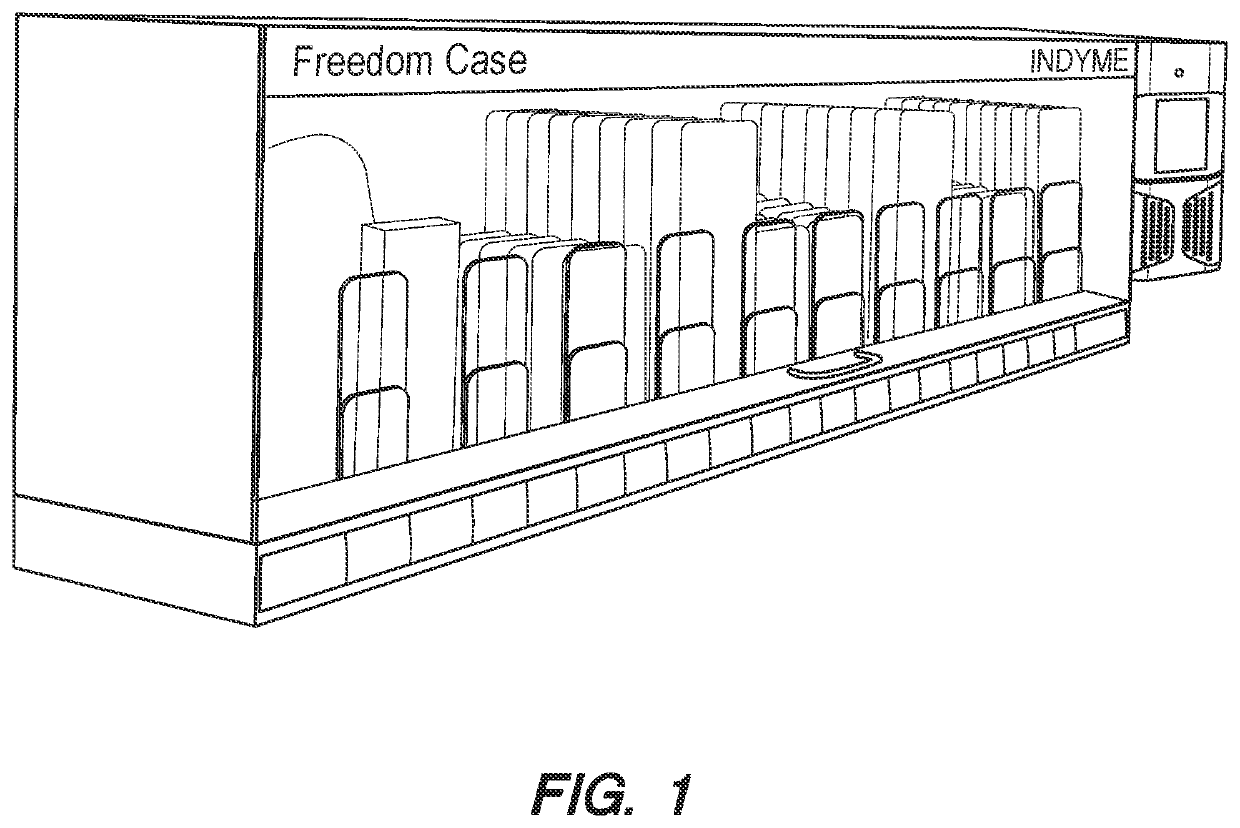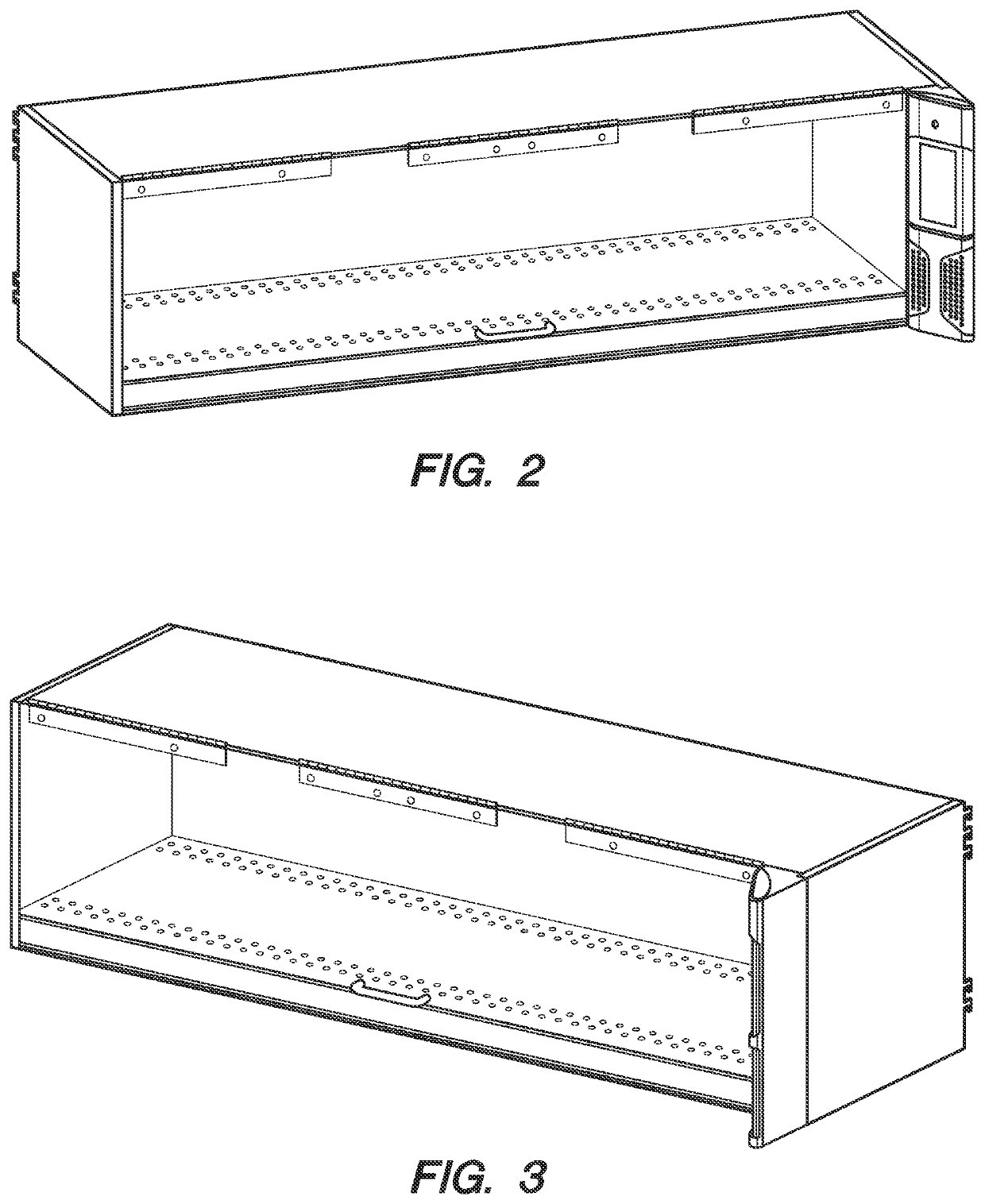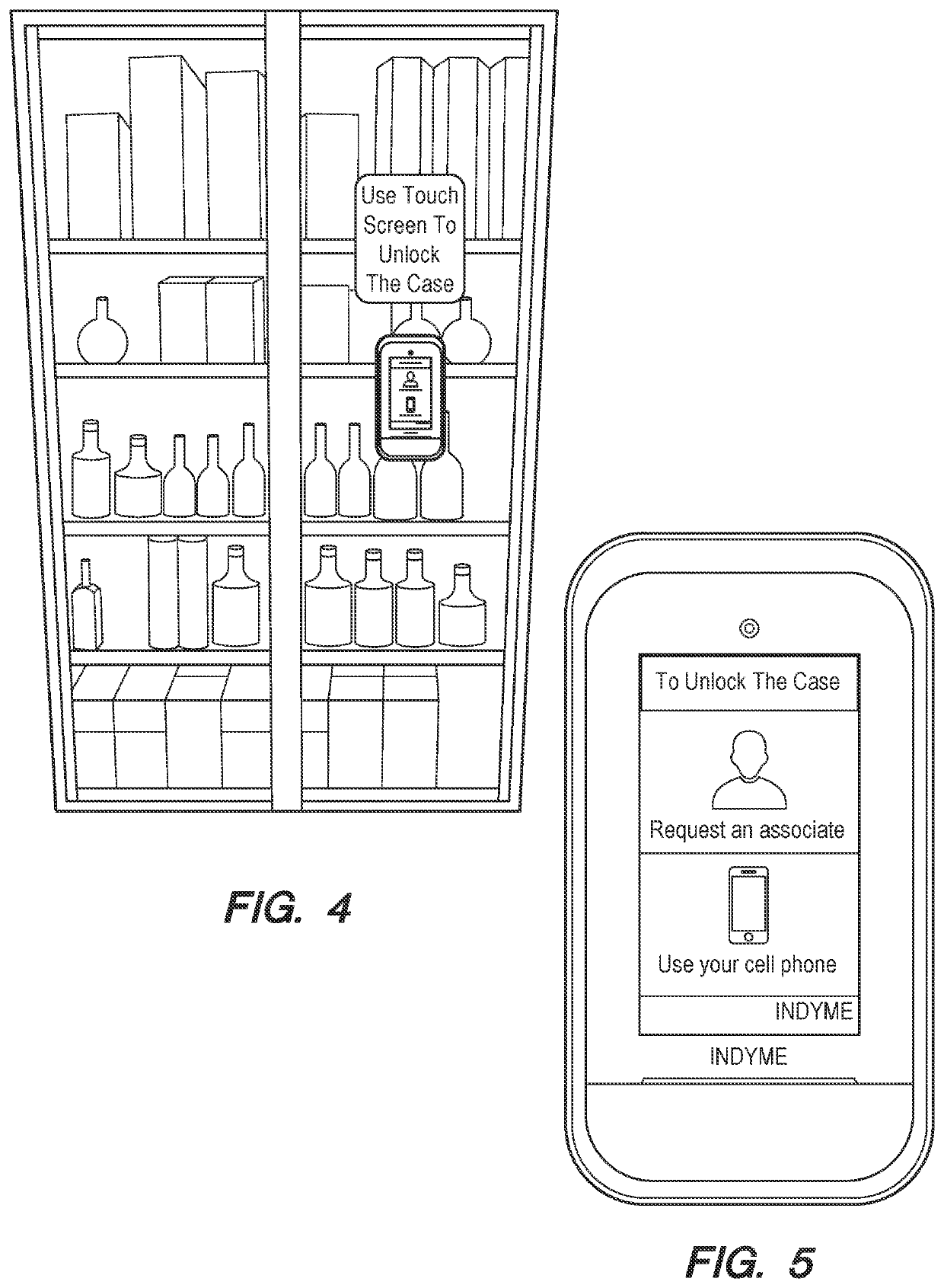System providing self-service access to locked merchandise
a self-service access and merchandise technology, applied in the field of systems providing self-service access to locked merchandise, can solve the problems of difficult for legitimate shoppers to access products, impact the vast majority of legitimate shoppers, and the process is not only costly and labor-intensive for retailers, so as to maximize convenience, minimize theft, and maximize sales
- Summary
- Abstract
- Description
- Claims
- Application Information
AI Technical Summary
Benefits of technology
Problems solved by technology
Method used
Image
Examples
Embodiment Construction
[0032]The invention is best understood by first gaining insight into the types of sensors and devices which are coupled together to enable its operation. Keeping in mind that a specific attribute of the invention is that is the operation of the invention is not dependent on any one specific sensing or merchandise access restriction technology. Three categories of sensors and devices are typically integrated to operate the invention:[0033]People identification sensors capable of uniquely identifying an individual;[0034]Merchandise interaction (customer behaviors) sensors.[0035]Real-Time Deterrents Merchandise protection and suspicious behavior notification devices;
[0036]Using the information and controllable access provided by these device categories, the invention determines if a given person is considered “trusted” and will be granted merchandise access. A more detailed description of each category follows.
Person Identification Sensors
[0037]The invention requires a method of unique...
PUM
 Login to View More
Login to View More Abstract
Description
Claims
Application Information
 Login to View More
Login to View More - R&D
- Intellectual Property
- Life Sciences
- Materials
- Tech Scout
- Unparalleled Data Quality
- Higher Quality Content
- 60% Fewer Hallucinations
Browse by: Latest US Patents, China's latest patents, Technical Efficacy Thesaurus, Application Domain, Technology Topic, Popular Technical Reports.
© 2025 PatSnap. All rights reserved.Legal|Privacy policy|Modern Slavery Act Transparency Statement|Sitemap|About US| Contact US: help@patsnap.com



